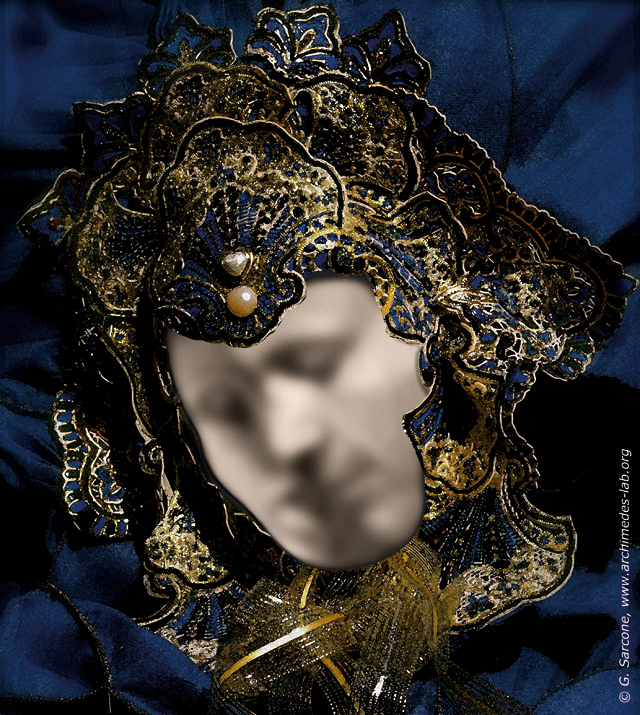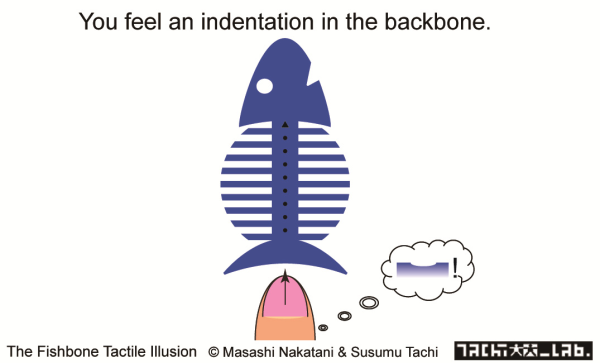Play the movie while looking at the small white speck in the center of the ring. At first, the ring is motionless and it’s easy to tell that the dots are changing color. When the ring begins to rotate, the dots suddenly appear to stop changing. But in reality they are changing the entire time. Take a look.
Grouping by Contrast
Luminance levels of four disks modulate in time. The top two disks become white when the bottom two disks become black, and viceversa. When placed against a split background, the disks group together along the diagonals. This grouping pattern follows the contrasts of the disks relative to their backgrounds.
The Loch Ness Aftereffect
Fixate the red point you will see in the center while paying attention to the rotating ring of gray lines
Most observers perceive that the ring of lines rotates slowly, with brief jumps of much faster rotation in the opposite direction. The very fast jumps are illusory. The illusion usually gets stronger after one or two jumps, and seems to be enhanced by paying close attention to the lines in the ring.
The most famous illusion of movement is the motion aftereffect: look at uniform motion for a while, and things will seem to move the other way. It was discovered a long time ago by staring at a waterfall in Scotland, and, though important, is a bit boring: the illusory motion is slower than the real movement that induces it. As it turns out, the Scottish waterfall actually feeds… Loch Ness, and that just under the placid surface of the motion aftereffect lurks a true monster, capable of producing illusory motion a hundred times faster than the inducing movement.
The more-or-less morphing face illusion
The illusion comprises a morphing sequence between two faces. The observer has to fixate a dot superimposed on the morph. When the dot is moving, morphing can hardly be seen. However, when the dot suddenly stops, the morphing appears surprisingly strong. Subtle differences in, e.g., the shape of the eyes, the color of the skin, and even gender characteristics are “blown-up” perceptually. Apparently, such differences between faces are easily overlooked when following a moving-dot, but are highly salient when our eyes rest at a single point on the morphing faces.
Mask of Love

The viewer (test person) sees a picture representing a Venetian mask and is asked if he/she notices something special in it. A surprising number don’t notice that the main features of the mask are actually composed of two distinct faces: a man and a woman kissing one another.
Once the viewer discerns two individual faces, his/her brain will ‘flip’ between two possible interpretations of the mask, making the viewer perceive two faces or one face in alternation.
This kind of illusion, where the viewer experiences two equally possible interchangeable stable states in perception, is called “bistable illusion”.
View solution or the animated version.
Impossible Illusory Triangle

Begin with a three-line figure resembling three chopsticks arranged in a triangle. A wave of a magic wand behind it reveals the structure of a solid triangular object existing only in the way that it dynamically occludes the waving wand. Each part of the object makes sense on its own, but they cannot integrate into a single coherent object because each corner wants to be in front of the other two – a profound 3D spatial intransitivity characteristic of the classic Penrose impossible triangle. The perceived 3D figure generated in this way is simultaneously both illusory and impossible.
Download presentation
Attention-induced motion displacement
Fixate the blue dot.
When you attend to the whole white layer”s motion, the red dots appear to be slanted to the right.
When you attend to the whole black layer”s motion, the red dots appear to be slanted to the left.
When you don”t attend to either layer, the dots are aligned vertically, which they in fact are in every case.
The Exchange of Features, Textures and Faces
The binding problem is a fundamental issue in neuroscience. The term refers to the fact that the brain processes color, motion, and other visual features separately and in parallel, yet our perception is of a unified world, populated by coherent objects. Here we investigate the binding problem with illusions that show—rather dramatically—that features can bind and rebind to moving objects. We show that this effect depends on the color of the background and on whether observers view the illusions centrally or peripherally.
Fishbone Tactile Illusion

The “Fishbone Tactile Illusion” occurs with a stimulus with the centerline (“fish spine” sandwiched by the ridges (“tiny bones”). You would feel indentation in the centerline, when stroking it with a fingertip, even though it is as flat as the ridges. This illusion occurs because both surface form and texture information are transmitted by the same tactile afferent nerves. Due to the cross talk between those two streams of information, the texture in the ridges can bias the form perception of the centerline. The sample is on my business card, so please come get one and enjoy the illusion!
Illusions from rotating rings
A rotating figure 8 made of two overlapping rings is ambiguous. Small spots painted on the rings can resolve the ambiguity, forcing them to look like an 8 or like 2 rings. Even without any spots, if the brightness of the intersections where the rings overlap makes the rings look transparent, they slide. If not, they stick.
